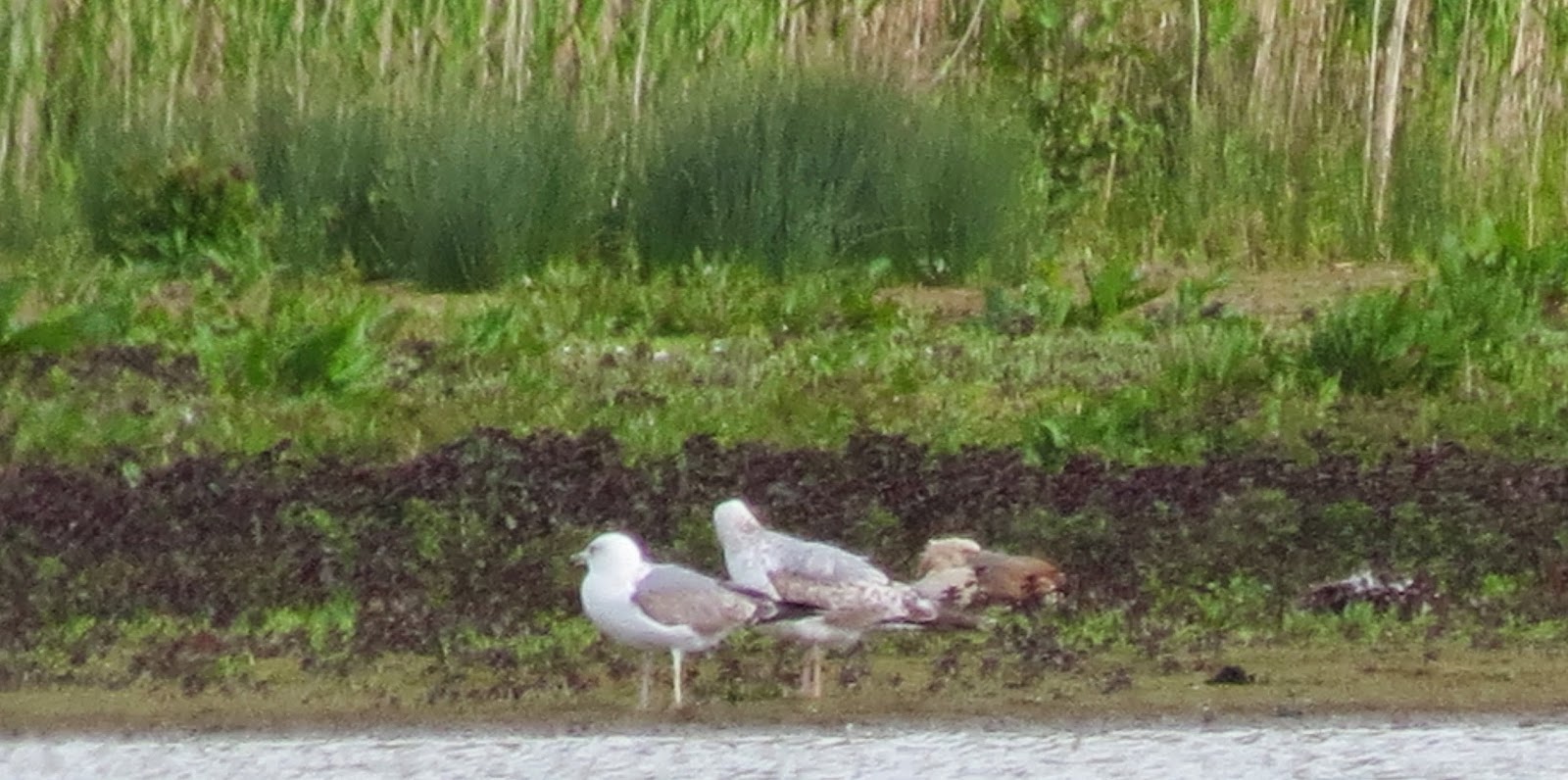MONDAY 12 MAY
The strong westerly wind of yesterday
abated, giving way to some fine, warm weather. In fact, temperatures reached
nearly 70 degrees F during the afternoon before the onset of 'monsoon' weather
just as it got dark.
Just as I was about to leave the house this
morning, Adam Bassett 'phoned to say that he had just found a CATTLE EGRET
at SPADE OAK - the first ever to have been recorded there. I jumped immediately
into the car but as it was rush-hour still, it took me about 35 minutes to
arrive. In that time, Adam had seen the bird depart and return, but as I arrived
at the 'watchpoint' on the west bank, there was no sign. I walked around to the
south side and checked the 'Cormorant Island' from the railway but still no sign
- had it gone? I glanced back towards the bench and suddenly espied it - it was
roosting on one of the small islands where a few near-adult Grey Herons were
building nests. As Adam had stated, it was in fine fettle, with rich buff on the
crown and some light buff on the mantle; the bill was largely pink.
It sat in the Willow for the next 90 minutes
before suddenly taking flight at 1116 hours, heading purposefully SSE along the
River Thames. I lost it as it reached Berks airspace but CDRH positioned
elsewhere, hotly pursued it and relocated it on COCK MARSH, before it was
swiftly disturbed by walkers. After eight minutes, it flew back to SPADE OAK,
this time settling with the 4 Little Egrets feeding at the east end of the spit.
It then remained here, rather distantly, for the next four hours, before flying
off again mid-afternoon. A trickle of observers arrived after midday, including
Jim Rose and Dave Cleal.
CATTLE EGRET images follow.........
My initial views of the Cattle Egret as I looked back towards the west bank
standing out in full view on the Willow but very distant
I got close but could not get a clear view through the branches
Once on the spit, it became even more distant
Adam and I also saw and photographed a
first-summer CASPIAN GULL at the site, loafing with up to 12 Lesser Black-backed
and a few Argenteus Herring Gulls. Otherwise, 5 singing male GARDEN
WARBLERS were noteworthy.
Also noted were -:
Great Crested Grebe (10+, including a pair
nesting on one of the smaller islands)
Sinensis Cormorant (90+, including at least
67 youngsters on the island)
Grey Heron (45+, including 9 fledged
young)
Little Egret (3 active nests on the island
with 4 birds at a time feeding on the spit)
Mute Swan (4)
Australian Black Swan (pair)
Common Shelduck (6)
Greylag Geese and Atlantic Canada Geese
(both accompanying young)
Egyptian Geese (pair still with 9
goslings)
Mallard (20+ including 2 family
parties)
Tufted Duck (4)
Red Kite (18)
Moorhen (4)
Coot (12, with at least 4 active
nests)
Lapwing (2)
LITTLE RINGED PLOVER (2)
Black-headed Gull (1)
Common Tern (26)
Woodpigeon & Stock Dove (2)
Great Spotted Woodpecker (feeding
young)
Common Kingfisher (both adults flying back
and forth with food)
Ring-necked Parakeet (4)
Common Swift (4)
Song Thrush (1)
Common Blackbird (4)
Wren, Robin, Dunnock &
Chaffinch
Blackcap, Common Whitethroat, Common
Chiffchaff
Small Tortoiseshell & Brimstone
butterflies





































